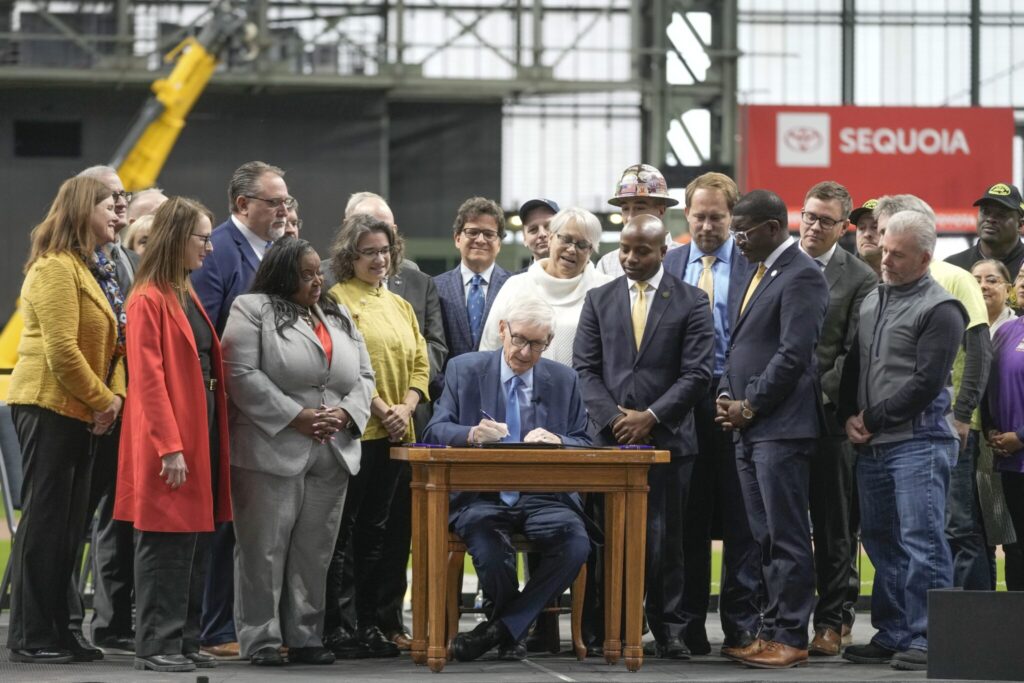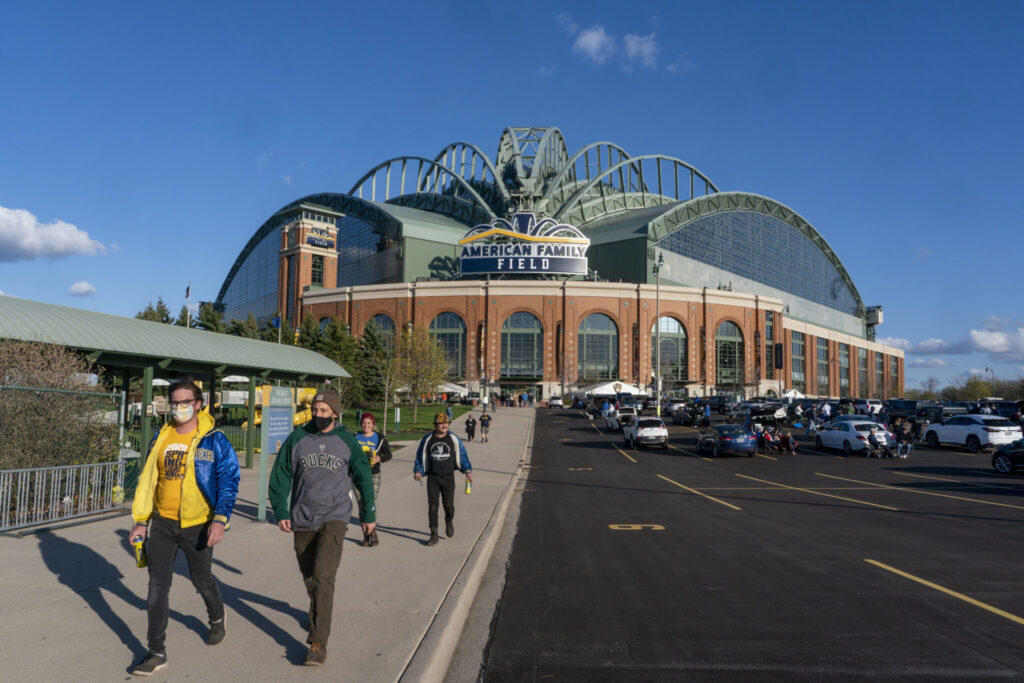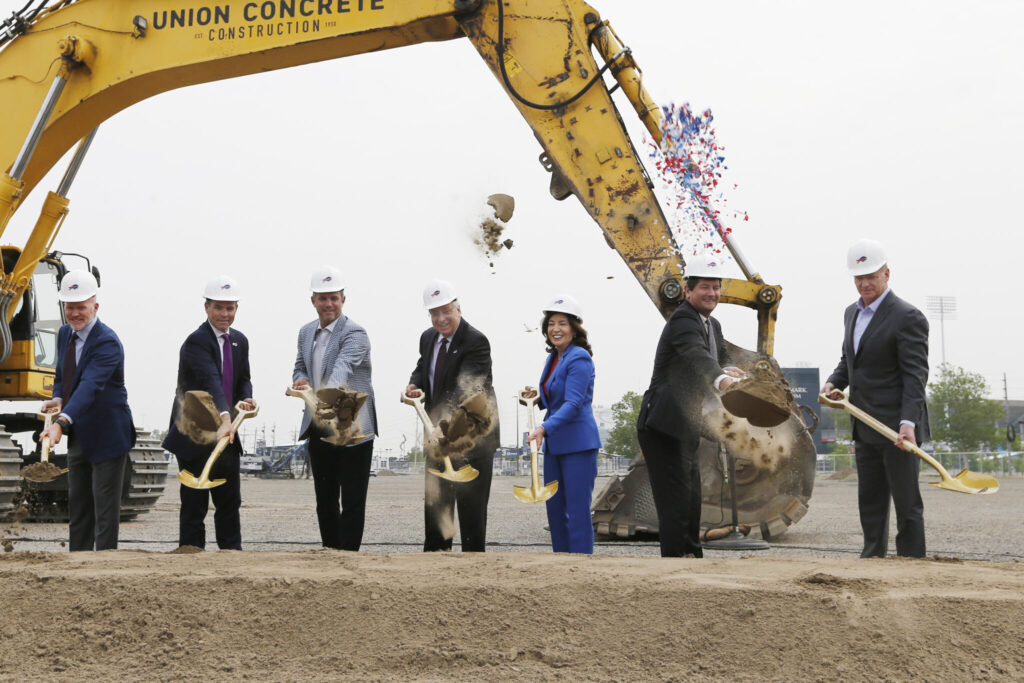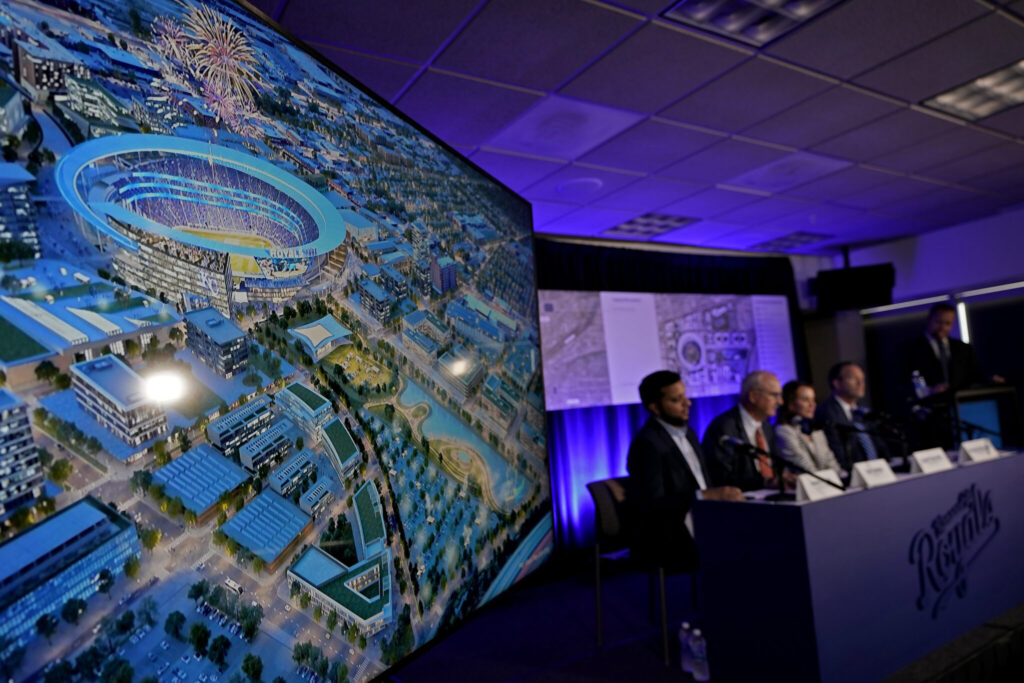Standing on a portable stage erected at home plate of the Milwaukee Brewers ballpark, Wisconsin Gov. Tony Evers recently praised the professional baseball team as an “essential part” of the state’s “culture and identity” and “economic success.”
Quick Read
Governor Tony Evers of Wisconsin recently signed off on a significant public aid package for the renovation of the Milwaukee Brewers’ stadium, reflecting a broader trend in the United States where Major League Baseball (MLB) and National Football League (NFL) franchises are pursuing new or improved stadiums. Here are the main points of this development:
- Public Aid for Brewers Stadium: Governor Evers approved $500 million in public aid for the renovation of the Brewers’ stadium, recognizing the team as an integral part of Wisconsin’s culture, identity, and economic success.
- Nationwide Trend in Stadium Construction: This move is part of a larger trend across the country. In 2023 alone, about a dozen MLB and NFL teams have initiated projects for new or improved stadiums.
- Economic and Competitive Motives: The drive for new stadium construction is partly motivated by teams’ desires to keep up with rivals and to generate new revenue streams. These projects often go beyond mere repairs, offering enhanced facilities like luxury suites, dining, and shopping.
- Debate Over Public Financing: There is significant debate about the economic benefits of stadiums for local economies. Critics, including economists, argue that such projects do not significantly boost local economies and question the rationale for using public funds.
- Examples of Stadium Projects: Several teams have unveiled plans for expensive new facilities. The Kansas City Royals, Tampa Bay Rays, Jacksonville Jaguars, Buffalo Bills, and Tennessee Titans are among those with billion-dollar stadium projects, often involving public funding.
- Concerns Over Team Relocation: A common argument for public funding is the fear that teams might relocate if their demands for new facilities aren’t met. The recent approval for the Oakland Athletics to move to Las Vegas exemplifies this concern.
- Public Opinion and Backlash: Public opinion on funding stadiums with taxpayer money is mixed. While some see sports teams as essential to community culture, others oppose the use of public funds for such purposes, especially when the financing involves substantial amounts and long-term debt.
- Economic Arguments: Many economists contend that public funding for stadiums is not a sound economic investment, as it tends to redirect rather than generate new income.
The Associated Press has the story:
Plans abounding for new sports stadiums across US, carrying hefty public costs
Ndewslooks- (AP)
Standing on a portable stage erected at home plate of the Milwaukee Brewers ballpark, Wisconsin Gov. Tony Evers recently praised the professional baseball team as an “essential part” of the state’s “culture and identity” and “economic success.”
With fanfare, Evers then signed off on $500 million in public aid for the stadium’s renovation, adding to a remarkable run of such blockbuster deals. This year alone, about a dozen Major League Baseball and National Football League franchises took steps toward new or improved stadiums.

A new wave of sports facility construction is underway. One driven, in part, by a race to keep up with rivals and one that could collectively cost taxpayers billions of dollars despite skepticism from economists that stadiums boost local economies.
Though the Brewers primarily cited a need for repairs, many of the other new projects are much more than that. In some cases, sports teams are even seeking a new jolt of public funding for state-of-the-art stadiums while public entities are still paying off debt from the last round of renovations a couple of decades ago.
“These facilities are not physically obsolete. It’s not as if the concrete is falling down and people are in grave danger if they attend a game,” said Rob Baade, a retired economics professor at Lake Forest College in Illinois.
“Teams are clamoring for new stadiums because it’s in their economic interest to do so,” Baade said, adding, “The new stadium model is one that spills over the stadium walls.”

THE POWER OF PEER PRESSURE
New or improved stadiums provide team owners with fresh revenue opportunities from luxury suites, dining, shopping and other developments, especially for those who control the nearby area.
For many, Los Angeles Rams owner Stan Kroenke is the model: His $5 billion football stadium opened in 2020 as the centerpiece of a sprawling development that will feature apartments, offices, retail stores, public parks and a theater.
The difference, however, is that Kroenke is privately financing the project, after uprooting the Rams from a publicly funded stadium in St. Louis that was still being paid off.
The Kansas City Royals in August unveiled two options for a new $1 billion baseball stadium as part of an overall $2 billion development. The Tampa Bay Rays followed suit in September, unveiling plans for a $1.3 billion baseball stadium as the centerpiece of a $6.5 billion development in St. Petersburg, Florida, that also features housing, retail stores, restaurants and bars and a Black history museum.
They joined the Jacksonville Jaguars, the Buffalo Bills and the Tennessee Titans, all of whom announced plans for or began construction on new billion-dollar football stadiums with luxury amenities.

Those projects all also came with public funding, including the $760 million in local bonds the Nashville City Council approved to go with $500 million in state bonds to pay for the Titans’ new $2.1 billion stadium. As part of the deal, the Titans agreed to pay off the remaining $30 million of public debt owed for their current stadium, which opened in 1999.
As the Baltimore Ravens announced a publicly funded $430 million renovation this month, the football team’s senior vice president for stadium operations said the facility is “already considered by many to be top-of-line.” But “we must remain cutting-edge and captivating,” Rich Tamayo said.
The trend extends beyond baseball and football.
On Dec. 12, Oklahoma City voters approved a 1-cent sales tax for a new Thunder basketball team arena costing at least $900 million. The next day, Virginia Gov. Glenn Youngkin announced a proposed $2 billion development to lure basketball’s Washington Wizards and hockey’s Washington Capitals to a new arena surrounded by a performing arts center, hotels, convention center, housing and retail stores.
The emerging cycle of stadium construction has a “level of extravagance that has ratcheted up tremendously” and is projected to peak around 2030, said J.C. Bradbury, an economics professor at Kennesaw State University in Georgia who has been tracking the projects.
FEARS OF TEAMS LEAVING
Underlying the pitch for new stadiums is an assumption that teams may head elsewhere if they don’t get what they want, a rare yet realistic possibility highlighted by MLB’s approval last month for the Oakland Athletics to relocate from California to Las Vegas.
The team’s new $1.5 billion baseball stadium in Nevada is being aided by $380 million in public funding. It will be built not far from the $2 billion football home of the Las Vegas Raiders, which opened in 2020 with $750 million of public funding from hotel room taxes.

The Raiders and A’s previously shared Oakland-Alameda County Coliseum, which had been renovated at taxpayer expense in the 1990s to lure the Raiders back from Los Angeles. The remaining $13.5 million in public debt from that renovation is to be paid off by February 2025, by which time both teams could be gone.
Longtime A’s fan Ken Rettberg is frustrated by both the A’s impending departure and the lavish public aid benefitting wealthy team owners.
“It’s crazy … how they can get away with giving away taxpayer money. It’s completely absurd,” said Rettberg, a software engineer who lives near Oakland.
Wisconsin officials feared the Brewers also could leave, taking their tax dollars with them.
While approving public aid for the Brewers stadium on Dec. 5, Evers asserted that “losing this team would have had a ripple effect felt by families and communities across this state.” He said the team generates billions of dollars of annual economic impact and supports thousands of jobs.
Brewers principal owner Mark Attanasio said other cities inquired, but “we never considered going anywhere else.” Records show the Brewers spent $575,000 lobbying lawmakers from January through June.
American Family Field, home of the Brewers, opened in 2001 during the peak of the last round of nationwide stadium construction, as cities replaced multipurpose facilities with glitzier sport-specific structures. Public funding covered nearly three-quarters of the $392 million cost.
Wisconsin’s latest stadium deal includes nearly $674 million for renovations, including a total of about $500 million from the state, county and city.
A PUBLIC BACKLASH
Ultimately, not everyone supports efforts to renovate or replace stadiums, or the trend of asking taxpayers to bear the cost.
The Titans’ new stadium carries the nation’s largest public subsidy for a professional sports facility. But voters delivered a rebuke in September, electing a progressive councilman who voted against the subsidy to serve as mayor.
The Chicago Bears in February bought a former suburban horse racing track as a potential site for a new football stadium and surrounding development but have yet to go forward with the potentially controversial move from downtown. The Illinois Sports Facilities Authority still owes $589 million through 2032 on public bonds issued for a renovation of the Bears’ current stadium two decades ago.

Many economists contend public funding for stadiums isn’t worth it, because sports tend to divert discretionary spending away from other forms of entertainment rather than generate new income.
“When you ask economists should we fund sports stadiums, they can’t say ‘no’ fast enough,” Bradbury said. “Yet when you ask a politician, they can’t say ‘yes’ fast enough.”
Public opinion appears mixed.
A survey conducted last year for the Global Sport Institute at Arizona State University found professional sports teams were viewed as a necessary cultural component of communities by 60% of respondents. Yet fewer than half believed state and local governments should provide public funds for sports stadiums.

The proposal to build a new Royals stadium closer to downtown Kansas City spurred thousands of fans to join a Facebook site rallying to keep the current stadium. The hefty public financing forms part of their objection.
“We’ve got a perfectly good stadium sitting there that was recently renovated and we’re still paying on that,” said Royals fan Jim Meyer, an administrator of the website. He added, “There is no real reason to replace it.”






